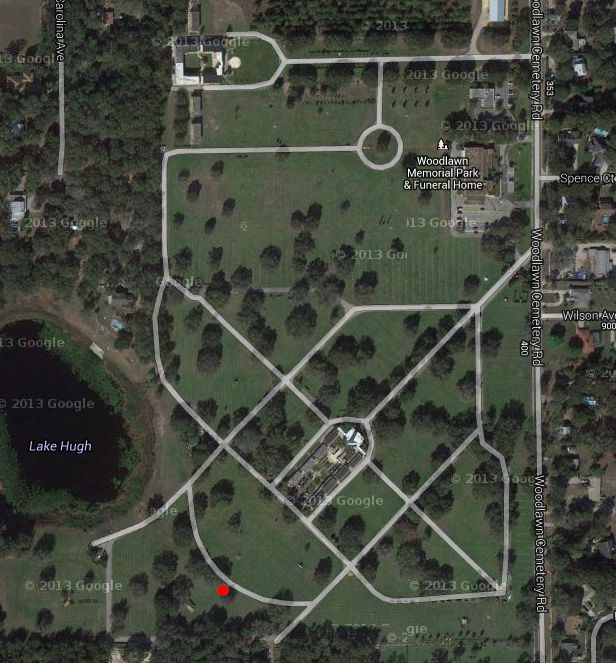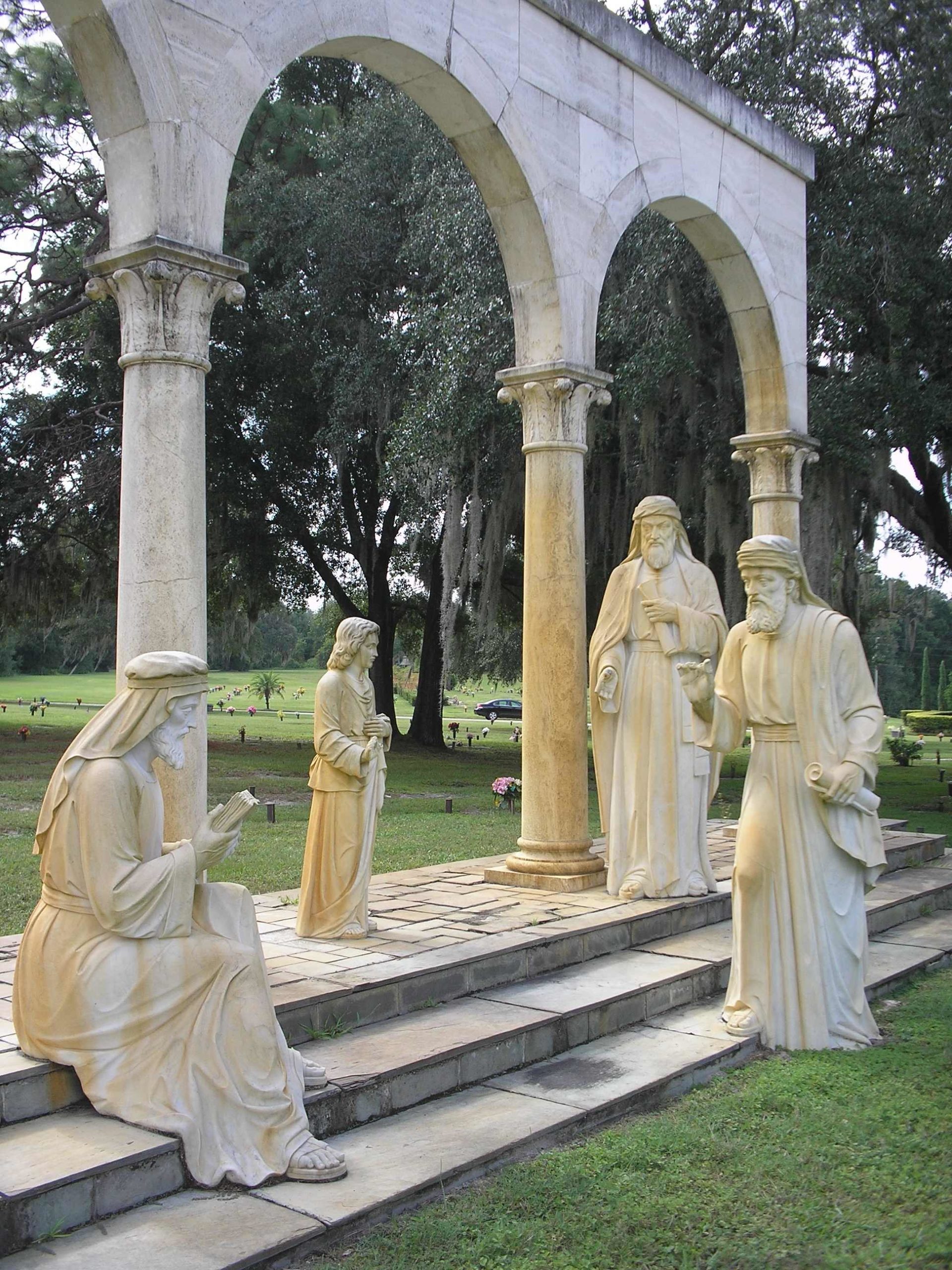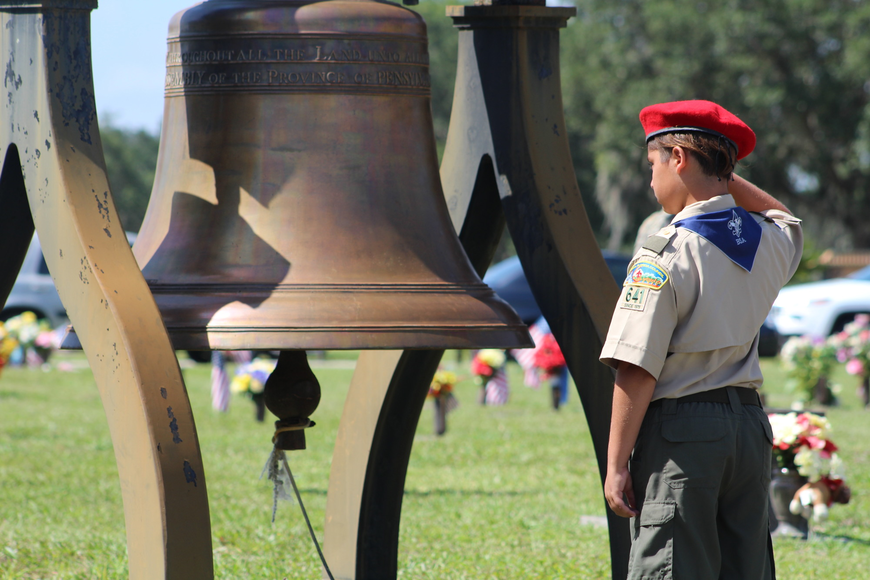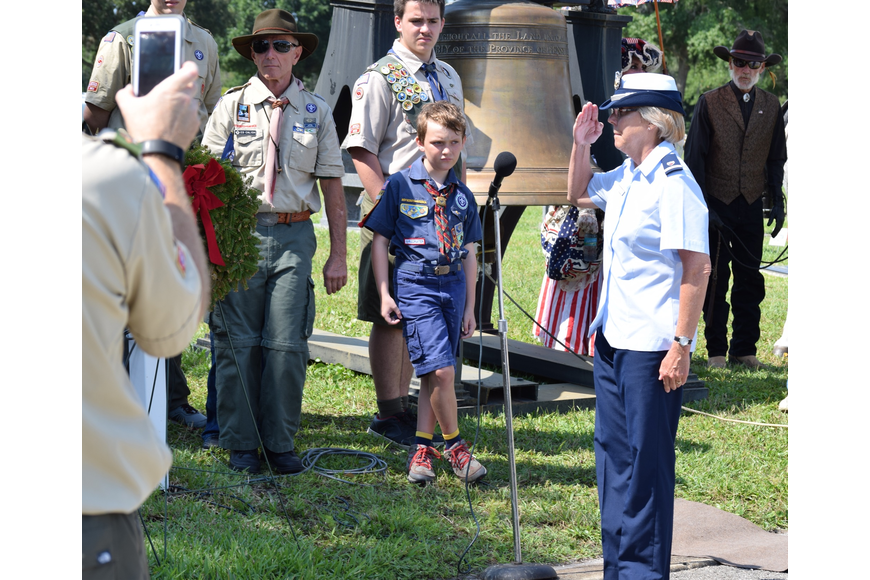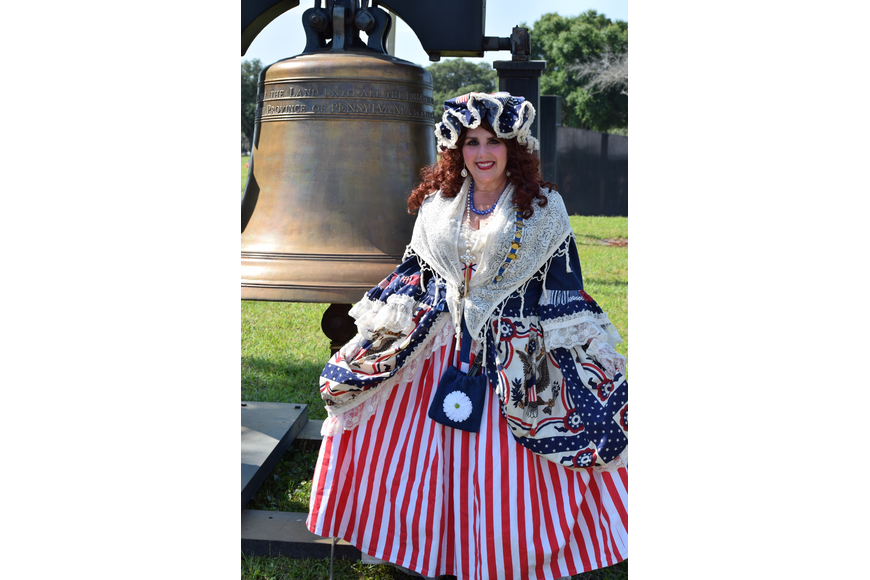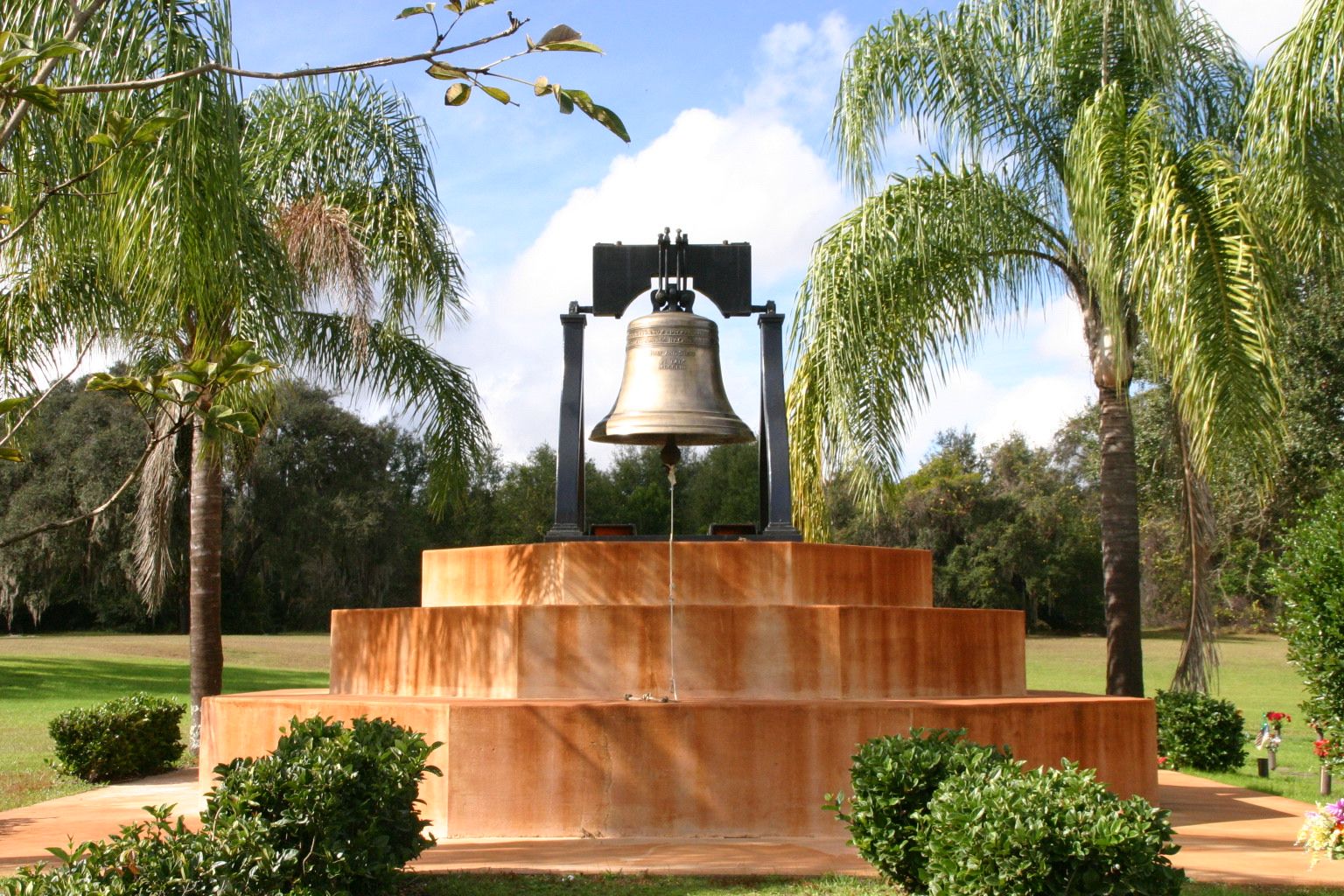The Woodlawn Memorial Park Liberty Bell
At a recent professional hobnobbing event in Miami, a colleague introduced me to another colleague as the person who hunts down and writes about Liberty Bell replicas. As I’ve learned to do in such situations, I prefaced the conversation that followed by inviting my new acquaintance to tap out at any time. No harm, no foul.
She seemed somewhere between genuinely interested and adept at feigning interest. I went on to talk a lot more than I usually do at such shindigs. I told her about the 1950 U.S. Treasury Savings Bond drive, and how most people think there are 55 bells, but some plaques say 53. But we don’t talk about the one we gave Japan and how the Treasury kept one for themselves — which is different than the D.C. bell, which has been missing since 1981, and France gave us one, and we gave France one in return — and that clearly adds up to 57.
As I took a breath and a swig of my Miami Weiss, my new friend got a word in edgewise, “Well, at least there are only 57. So you’ll be done writing about them at some point.”
“Actually,” I replied, “those are just the Treasury bells. There are so many more. Florida has at least four and … ”
She backed away slowly and blended into the shrubbery.
This is one of the stories I was going to tell her:
The Liberty Bell at Woodlawn Memorial Park in Gotha, Florida, is — as I was saying — one of the state’s four Liberty Bells, and one of at least six that reside in graveyards across the country. This story is the last in the Florida series and the first in the cemetery series.
My quest to locate and illuminate the world’s Liberty Bells has taken me to some strange places: a sad, smoke-filled casino in New Mexico; an old church basement in Allentown; a high school in North Dakota; Albany. It’s grown from a quirky obsession to a sound creative construct — built on the idea there is a story everywhere if you dig deep and find the right perspective.
With a replica as my guiding star, I’ve had the joy of researching and writing about subjects I could have easily lived my entire life not understanding as deeply as I now do — baby turtles and Tastee-Freez and the Phillie Phanatic, to name a few.
I’m oddly excited to write six stories about cemeteries. I’ve been musing on the subject since the third grade.
Most replicas are where you’d expect them to be: Capitols, parks, museums. But you’ll also find Liberty Bells in unexpected places: front lawns, fondue restaurants, graveyards. These bells ended up in graveyards the same way just about everything else happens: marketing.
We have a lot of choices when we die — now more than ever. So how do you decide where you want your bones to spend eternity? Cemeteries are tricky to promote and ever harder to tell one from another. For a handful of cemeteries in the 1970s, Liberty Bells struck just the right promotional tone — a balance of patriotic reverence and good old American grandstanding.
While everyone dies, not everyone’s in the market for a cemetery. For many Americans, religion dictates where we’re laid to rest — and it was through religion that I became fascinated with the ritual of death.
In big cities across the country, the Catholic Church followed a reliable model: divide the city into parishes, and build a church on a hill, with a school on one side and a cemetery on the other.
Philadelphia’s Saint Dominic’s parish was established in 1849, building a church along the King’s Highway, America’s oldest road. The children were educated on one side, and the dead were buried on the other — an efficient end-to-end Catholic supply chain. A century of baptisms and weddings and funerals followed, but the congregation never grew too large for the church to hold. Catholic churches are designed aspirationally.
By the time I arrived in 1981, the little cemetery had grown to envelop the church and school on three sides. The sprawling farmland had given way to blocks and blocks of rowhomes.
I do my best work staring out the window. It’s where my ideas are. From third through seventh grade, as my brain develops and I figure out how to make my friends laugh, and I teach myself to solve problems — I stare out the window at the cemetery.
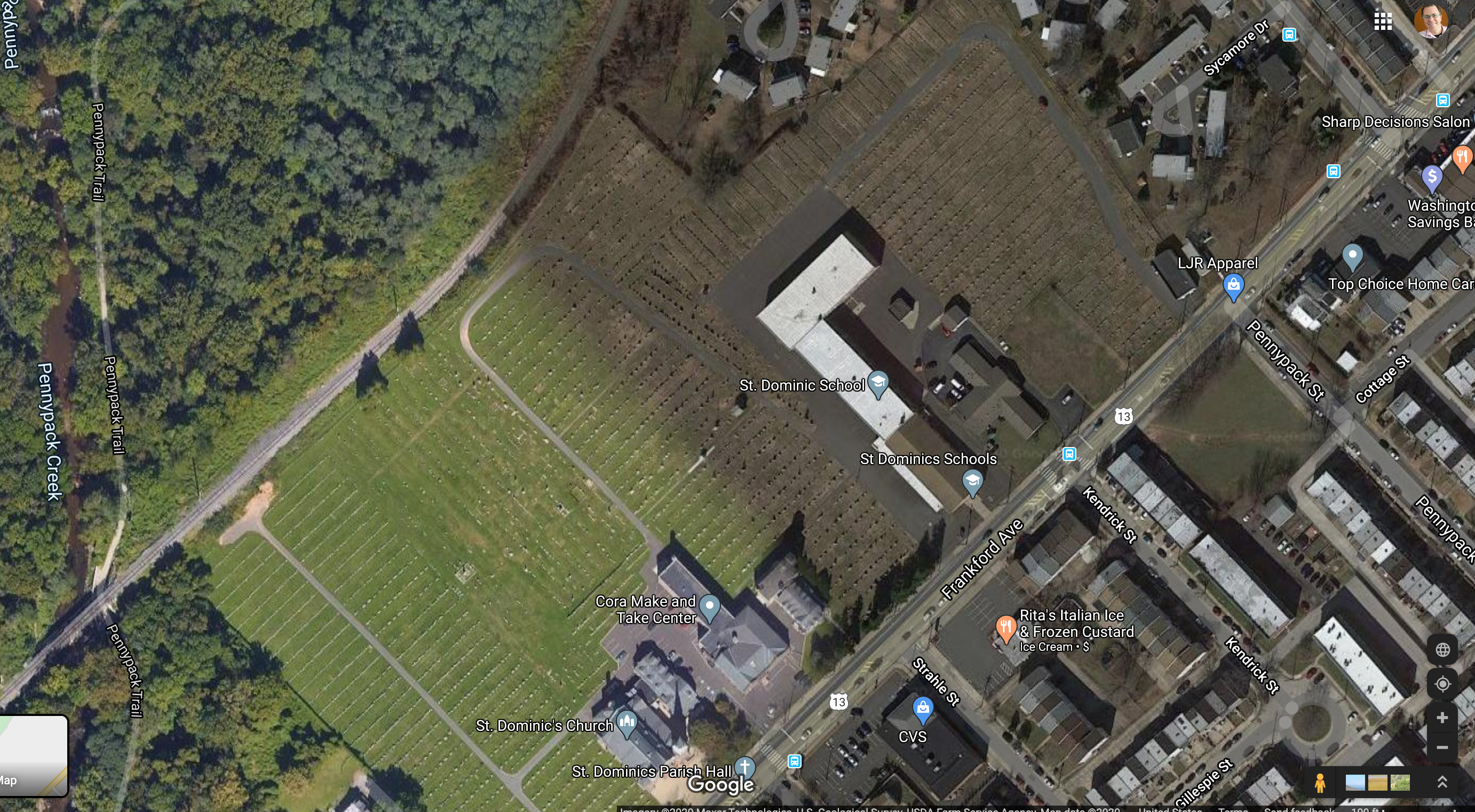
To get from one school building to the other, we walk through the cemetery. During recess, our playground is the small parking lot between the school building and the headstones. One of the boys removes his long, white tube socks with two red stripes on the elastic. He twists them into a crude but functional ball. In tight formation, a pitcher underhandedly lobs the sock ball. The batter swings his closed fist. The cemetery is home-run territory and strictly off-limits. If an intrepid fielder can retrieve the ball before being spotted by a nun, the game continues.
Church belief considers a Catholic cemetery consecrated earth — a place of prayer and reverence. Many faiths subscribe to similar beliefs.
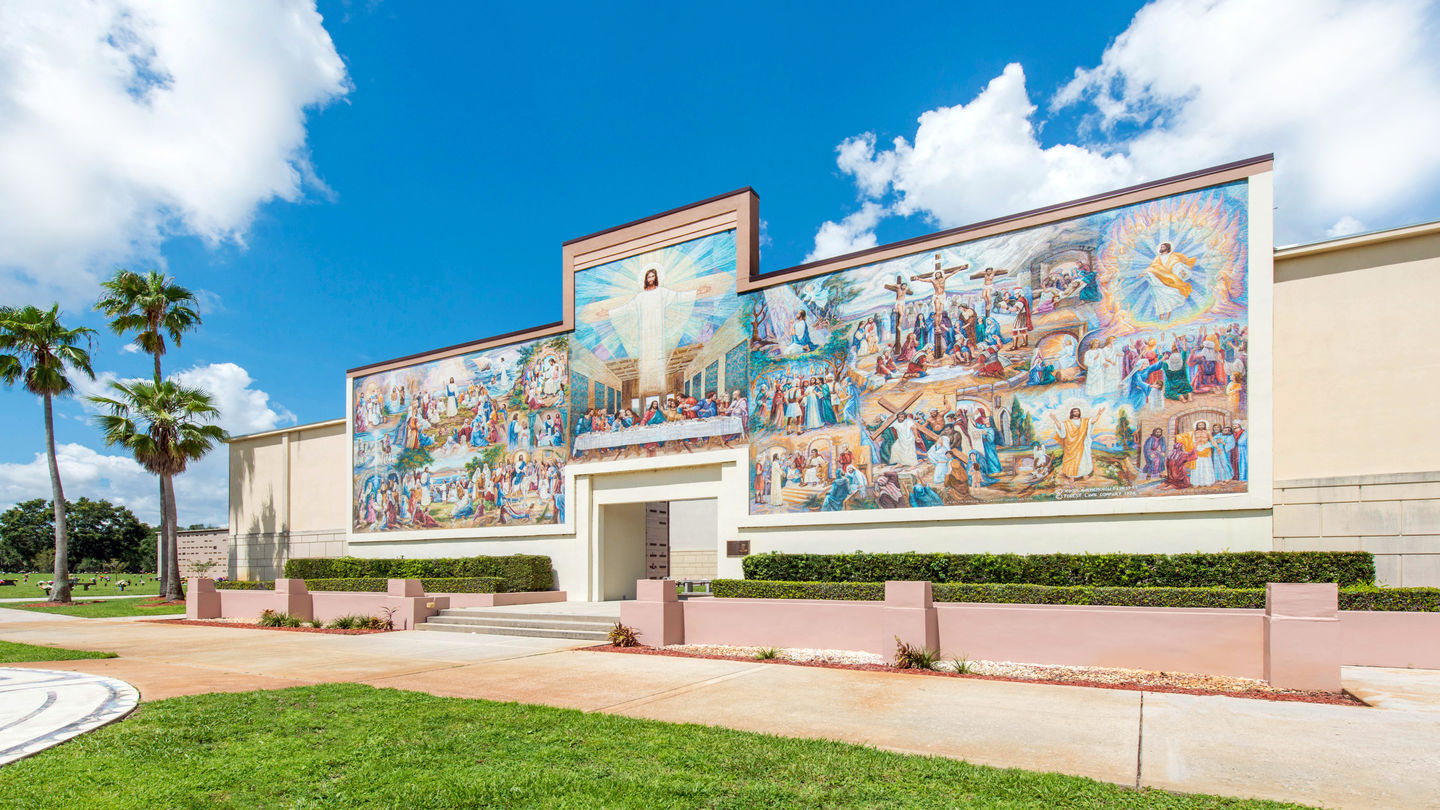
Established in 1926 on rolling, oak-shaded hills, Woodlawn Memorial Park is an inclusive, non-denominational cemetery. In 1972, with an eye on expansion, Woodlawn commissions a full-size, functional Liberty Bell replica from the storied Paccard Bell Foundry in France, where the 1950 U.S. Treasury bells were cast. The bell will be used as a promotional tool leading up to the 1976 Bicentennial. After the Bicentennial, it will be permanently installed as the centerpiece of the Garden of Eternal Liberty at Woodlawn.
The bell is featured in the November 1st, 1972 edition of the Orlando Sentinel. Displayed at the entrance of the Orange County Courthouse, a hand-lettered sign declares Mayor Carl Langford and County Commission Chairman Paul Pickett will ring the Liberty Bell upon the signing of the Vietnam peace treaty.
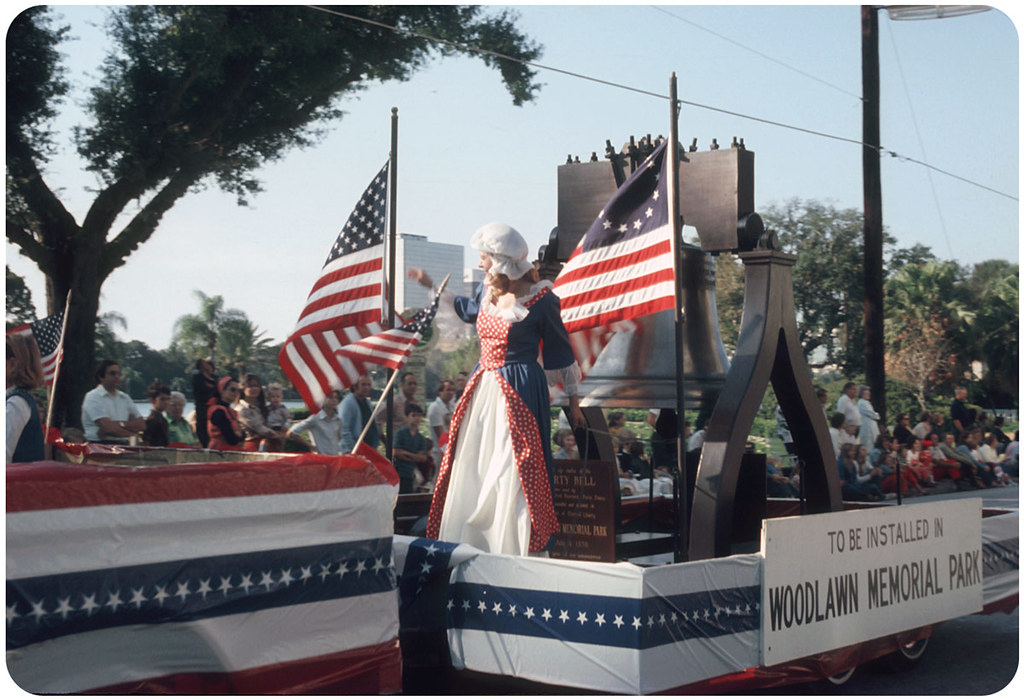
On Columbus Day, 1975, Woodlawn displays the bell at a middle school in Saint Cloud, Florida, as a reminder of American heritage. All interested citizens are invited to take part in the celebration.
After the Bicentennial fervor cools, the bell is installed in its permanent location, a three-tiered concrete pedestal topped by a wooden steeple.
On November 9th, 1980, dressed in blue denim pants and skirts and red and white checkered shirts, 52 students from nearby Elmwood Ranch middle school ring the Liberty Bell 13 times for the 52 U.S. hostages being held in Iran.
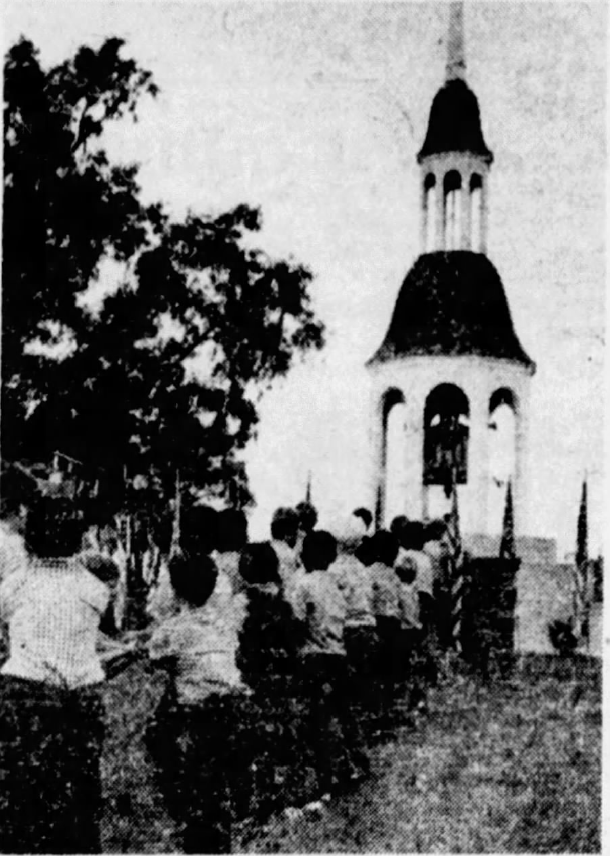
Graveyards are full of good people with interesting stories. Those stories gradually fade over time — after the last people who know them tell them for the last time.
Rare are those souls whose stories will carry on through history. Teddy Randazzo and Tim Crews lie in two such graves at Woodlawn.
A 2007 Songwriters Hall of Fame inductee, Randazzo was featured as a member of the Three Chuckles in Alan Freed’s 1956 film, Rock, Rock, Rock. He penned dozens of hits, including Goin’ Out of My Head by Little Anthony & the Imperials. His songs were recorded by the likes of Frank Sinatra, Ella Fitzgerald and the Stylistics.
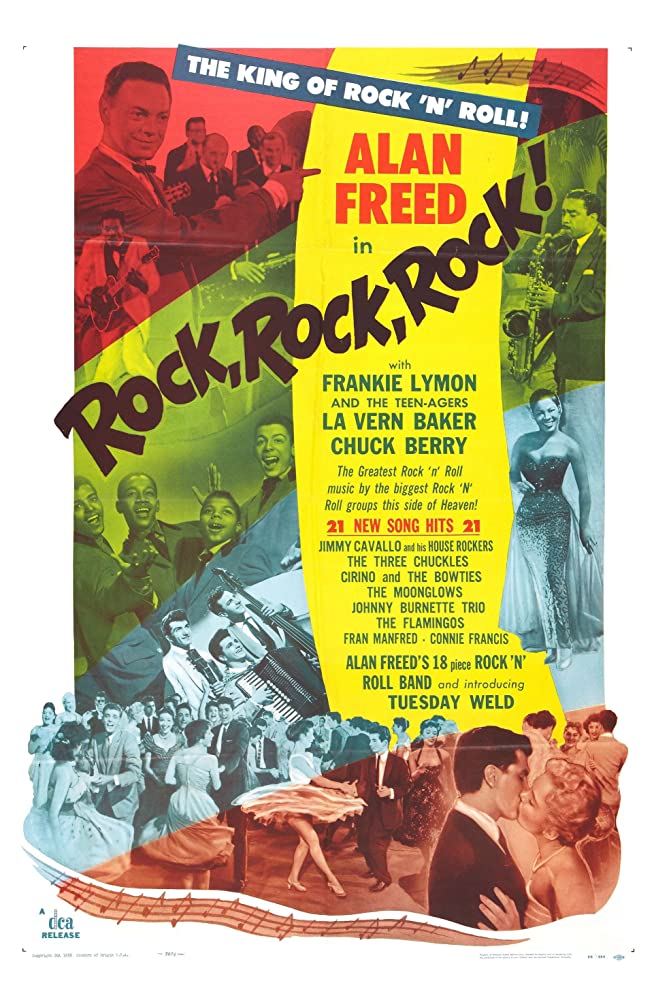
Tim Crews pitched relief for the Los Angeles Dodgers for six seasons, including their 1988 World Series championship year. Crews is as well-known for how he died as how he lived. In 1993, on a day off from spring training, he and two teammates topped off a day of barbecue and horseback riding by taking Crews’ speedboat out for some nighttime gator-spotting. Crews took a turn at 40 miles per hour, and the craft collided with a neighbor’s unlit dock. Twenty-seven-year-old submarine pitcher Steve Olin was killed instantly. Crews died the next day. Left-handed starter Bob Ojeda was the lone survivor.
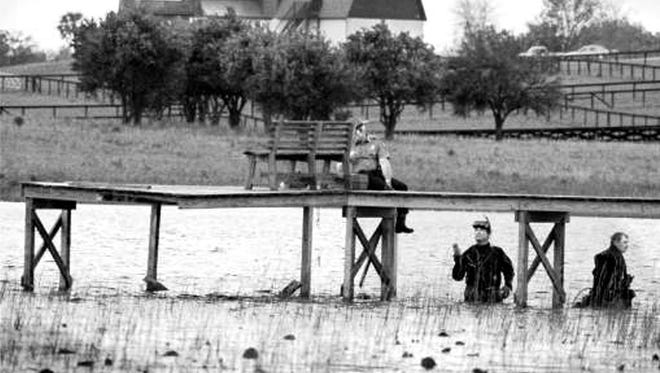
Rarer still are those who walked away from fame. Rock stars don’t willingly retire, but Guy Speranza did just that. The frontman of the seminal New York heavy metal band, Riot (not to be confused with Quiet Riot), ultimately couldn’t reconcile his religious beliefs and a career in heavy metal. He left the band in 1981. The following year he was asked to front the band Anthrax. Speranza turned it down, insisting on retirement. Anthrax went on to be regarded as one of the big four bands of thrash metal, selling 10 million albums. The band continues to tour and record. Speranza stuck to his word, moved to Florida, became an exterminator and died in 2003 of pancreatic cancer at 47.
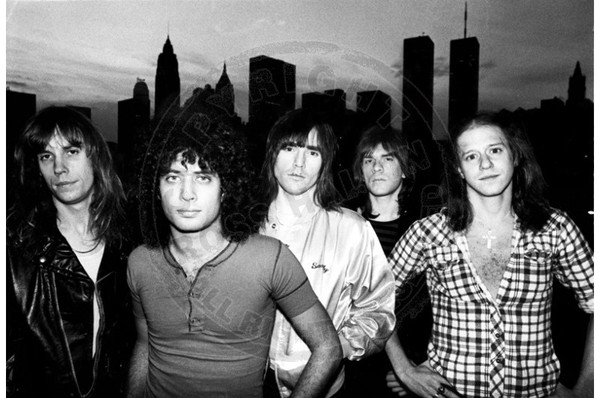
About a hundred yards from the Liberty Bell, beneath a sprawling oak and happy clouds lies Woodlawn’s most famous resident.
When her 24-year-old son died in a car crash, Annette Kowalski fell into a crippling depression. She passed her days lying on the couch. Watching Bill Alexander’s painting show on PBS brought her some small glimmer of joy. Looking to build on that joy, Kowalski’s husband bought her a 5-day painting class with Alexander. Instead of Alexander, she got his unknown protégé.
When Bob Ross retired from the Air Force as a Master Seargent, a position that required him to be a stern disciplinarian, he vowed never again to raise his voice. To save money on haircuts, he grew out and permed his hair. He took up painting.

Ross’s soothing voice and captivating demeanor helped Kowalski process her grief. Beyond making her feel better, she knew Ross could make the world a happier place. They formed a professional partnership that would span Ross’s entire career. After an unsuccessful string of live painting classes, Kowalski convinced PBS to give Ross his own show in Alexander’s old time slot. Neither partner made a dime from the show, but both earned a good living from merchandise, product lines and art sales. His paintings routinely sell for more than $10,000.
Ross died in 1995 from lymphoma at 52. Fans routinely make pilgrimages to his grave, taking selfies and leaving happy little squirrel figurines. They might also notice the Liberty Bell.
